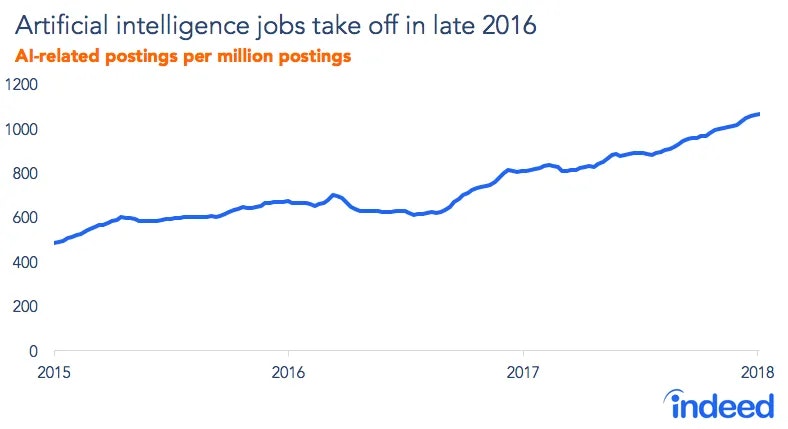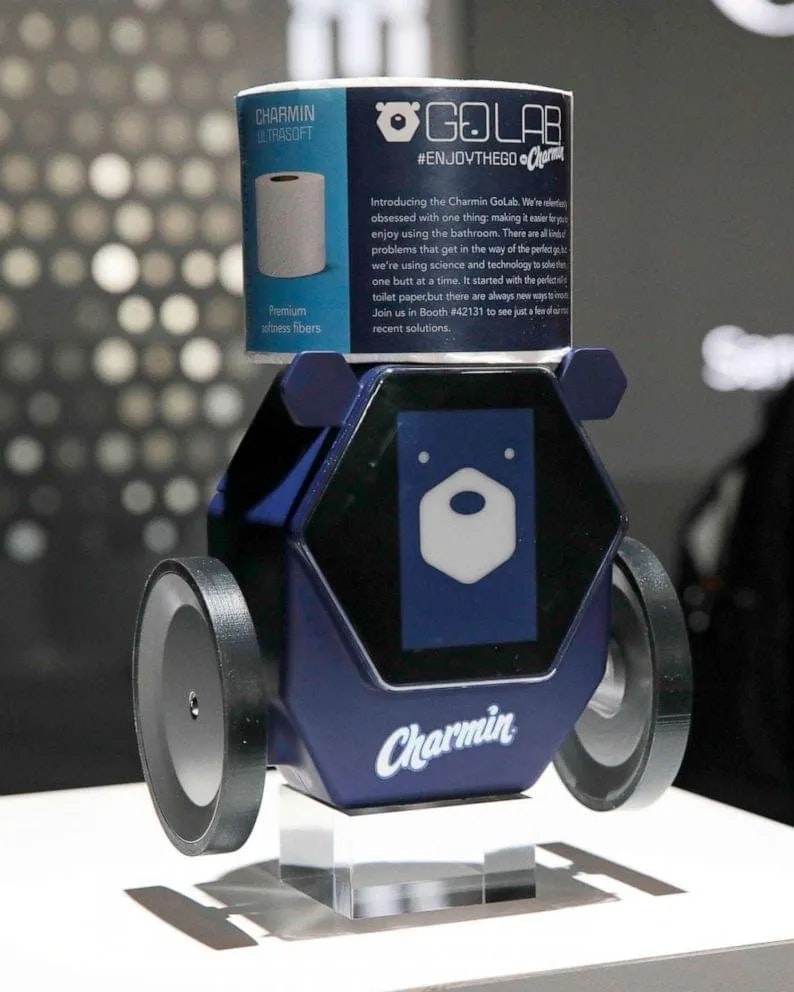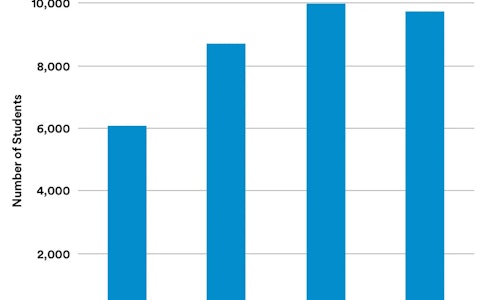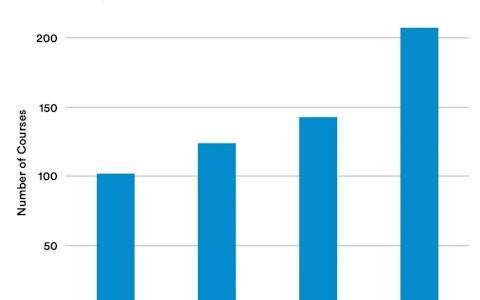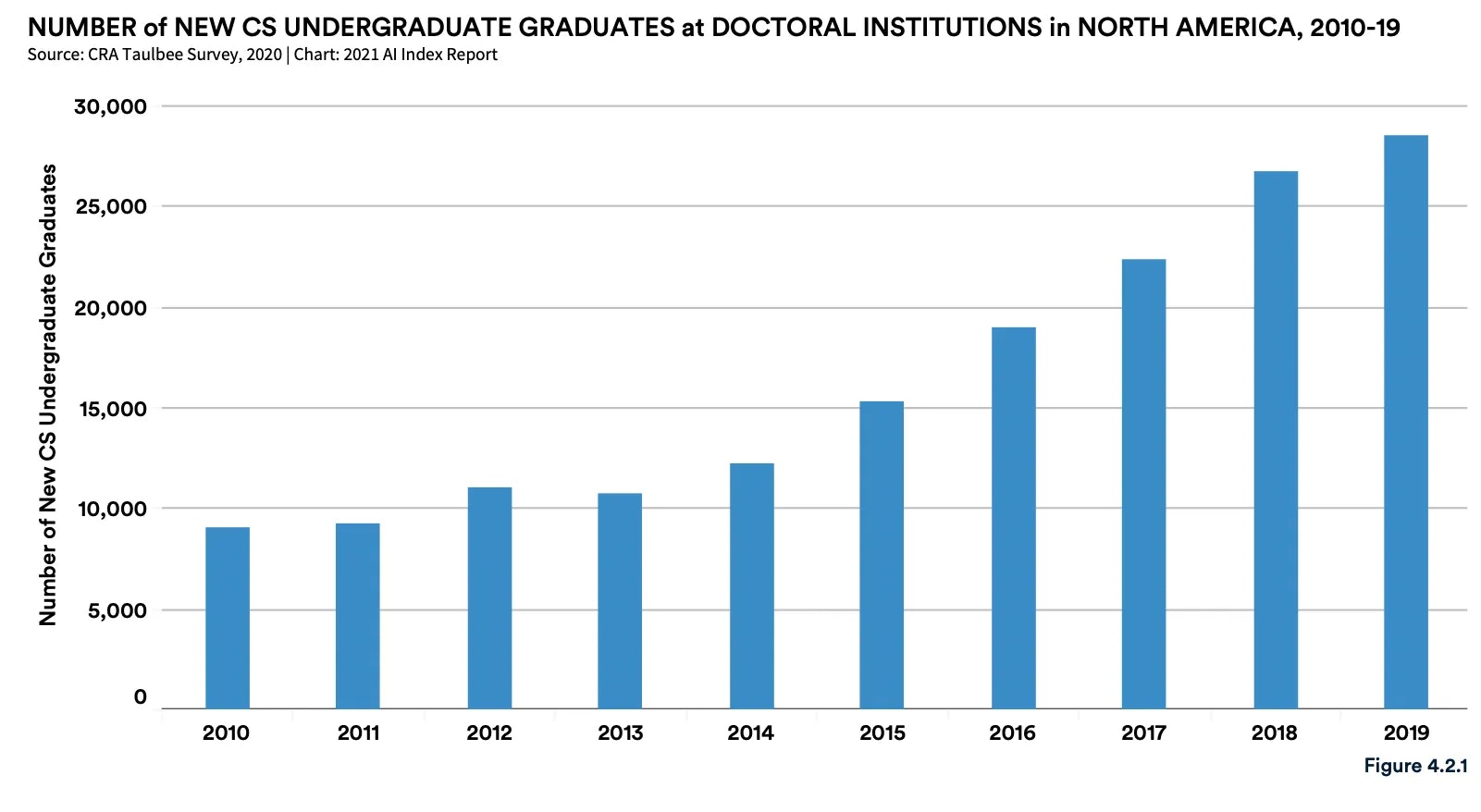What educational paths are out there?
Undergraduate
Bachelor’s Degrees
Students looking to study AI as part of a Bachelor of Arts (BA) or Bachelor of Science (BS) course of study have options when it comes to picking a major. While most instruction in artificial intelligence and machine learning is still taking place through AI or ML specializations added onto traditional computer science majors, standalone AI and ML majors are becoming increasingly popular.
So which is right for you?
Luckily, the choice isn’t as crucial as you might think: the two share remarkably similar curricula.
With some exceptions, bachelor’s degrees are designed for students who have aptitude in a particular subject, but little or no previous post-secondary educational experience. This means that regardless of whether you choose to major in AI or CS with an AI specialization you can expect to take foundational courses in math, statistics (e.g. Multivariable Calculus, Linear Algebra, Probability), and computer science (e.g. Computing Systems I&II, Principles of Functional Programming, Database Systems, Principles of Software Engineering), as well as AI-specific introductory courses and electives (e.g. Introduction to Artificial Intelligence, Deep Learning, Robotics).
Many programs also require a capstone project to be completed during your final year of study. Before that you can also expect to take a course in AI ethics and policy, a writing and communication course, as well as distributional requirements in the social sciences and humanities. Often, undergrads will also have the opportunity to assist their professors in cutting-edge research. And while a bachelor’s in artificial intelligence is an intense course of study, you might be able to complete it from your couch: increasingly, schools are allowing some or all of this coursework to be completed online.
Graduating from one of these bachelor’s programs generally means you can enter the job market immediately, working as a junior artificial intelligence or machine learning engineer, data scientist, or software developer. Or you might be recruited for a corporate training program, where you would rotate through different roles to gain experience and a better understanding of what might interest you. Another option would be to enter graduate study right out of undergrad.
Though there is significant demand in the labor market for AI professionals, there is still substantial competition for roles. Accordingly, it’s important to pay attention to student and alumni outcomes when researching schools. It’s also a good idea to choose a program that offers robust career services and active alumni networks, which are invaluable assets whether you are just starting your career or looking to move up.
Other important things to take note of when researching schools are cost and financial aid options. Tuition for public universities will generally be lower, especially if you are a resident and entitled to pay in-state tuition. Oftentimes, online programs will also have lower tuition. But regardless of a school’s tuition, there are many financial aid options available to you, from private scholarships and grants; to federal grants, scholarships, loans, and work-study programs; to private loans. In fact, over 80% of US undergrads receive some form of financial aid, so you’re in good company if you’re seeking help paying for school. The most important thing is to inform yourself about your options — and utilize private loans, which often come with exorbitant interest rates, only as a last resort.
Of course, before paying for school, completing a course of study, and entering the AI workforce, you’ll have to apply to a school and be admitted. While the process is similar for most schools, each has its own particular requirements and deadlines, so as you are researching programs you’ll want to take note of these details. To save you time, we’ve assembled pertinent information about stellar programs on our Undergraduate Degree Application Details page.
When applying to a program, you can generally expect to be evaluated for admission based on all or a mix of the following:
your achievement in high school
your standardized testing scores (including for tests like TOEFL if you are not an English native speaker)
the interests, character, and ambition demonstrated by your extracurricular activities
recommendations written by your high school teachers and guidance counselors,
your written answers to essay prompt
An interview with an alumnus, alumna, or admissions officer
Head over to our article on AI degree requirements for a deeper dive on this topic.
For AI programs, you will very likely need to show aptitude or readiness for the kinds of advanced math and statistics you will be required to learn, either through prior study in high school, AP tests, or through math boot camps, like AI Plus’ Foundations of Artificial Intelligence, or massive online open courses (MOOCs) like Imperial College London’s Mathematics for Machine Learning. Most programs will also require you to pay an application fee. But again, schools vary. Some schools are more focused on curating learning communities, and so might more heavily weigh essay responses that help them get to know you. Others might have temporarily or permanently lifted standardized testing requirements in light of COVID-19. Still others might have waived their fee requirements. When in doubt about what might be required, check!

